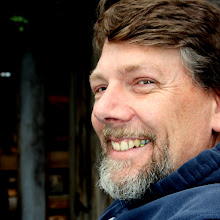The PDCruiser is a rather small vessel that I’m designing for multiple uses. Expecting this boat to be the perfect boat for me is a real stretch. I think we all realize that there is a chance that it won’t do anything very well.
Follow along in my thought process as I explore needs, wants, problems, and solutions. Maybe we can work together to find the compromises that will develop into a truly useful boat.
I’m designing the PDCruiser to be rowed, sailed, and powered by a small outboard motor as well as being comfortable to sleep aboard.
This means the seating configuration needs to be easily changed depending on the mode. For rowing, I need a bench seat down the middle of the cockpit. For sailing, I need seats down each side. And for sleeping, the seats need to fold out of the way.
The profile views below show how I envision using the space available.
The forward cabin needs to have a companionway opening that is almost full width of the boat. This opening is needed when the boat is set up for sleeping. However, the forward companionway needs to have a hatch cover to protect and secure items if the weather or seas are rough. This hatch needs to be easy to remove, fold, and store when not needed. I’ll need to work on a good design for this.
The forward cabin also has a sliding roof and walls that slides rearward to enclose the cockpit to create a 7’ cabin for sleeping. You can see in the drawing below that this hatch ends up obstructing some of the opening at the top of the forward cabin. I’ll live with the duck under that this creates until I come up with a better solution. You can also see that the sliding hatch needs some more designing in Sketchup. The cabin has to be longer at the top than the cockpit or the sliding hatch won’t cover everything in the closed position.
The rear cabin is used as a galley and storage. This space can be easily accessed when the boat is configured for rowing, sailing, motoring, or sleeping.
I really like the look and ease of operation that a leg-o-mutton sail rig gives me and I like the idea of a main sail as well as a mizzen sail on the PDCruiser like the Squeak has below.
The rear cabin and the mizzen mast create a real problem for steering. I can’t use a conventional tiller on a rudder so I did some research. I found an old drawing of a vertical tiller mounted to one side of the cockpit that is connected by ropes to a hoop on the rudder. Now I’m wondering if I’ll need a tiller on each side of the cockpit depending on which tack I’m on while sailing.
The forward cabin and the high sides of the cockpit create some problems with getting in and out of the boat, especially off of a sandy beach. I think I just need to live with the limited forward deck access. I’ve considered hinging the cockpit sides so they can fold down. They are in place to enclose the cockpit when the hatch is slid rearward.
I plan to use lee boards for sailing instead of a centerboard since I want to use the boat for sleeping. A centerboard trunk would take up too much real estate on such a small boat.
I’m considering a foam sandwich construction method for the PDCruiser. Using 1/2” foam board sandwiched between 2 sheets of 1/8” Okume would create very light and strong panels. These panels would also add to the flotation of the boat in the event of a capsize or swamping. The finished side panels would interlock with the ends, sides and bottom creating a 3/4” overlap for sealing. The Okume could be finished bright or painted for protection.
Plans are still coming together for my adventure trip to













